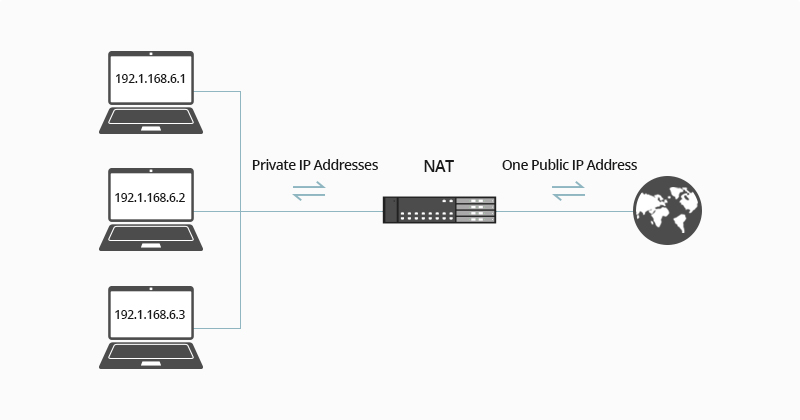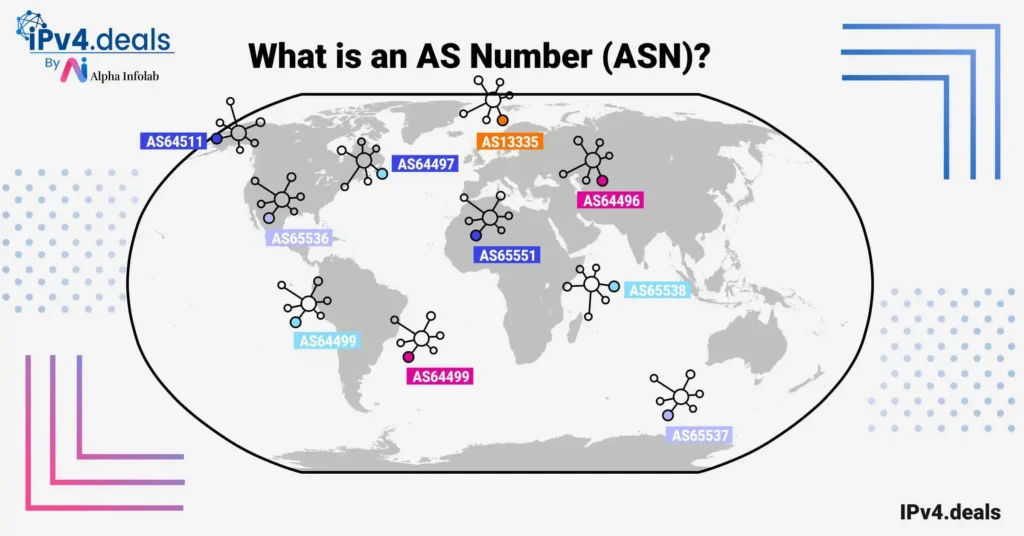Table of Contents
Introduction to IPv4 Multicast
The rapid growth of the digital landscape has led to an ever-increasing demand for efficient data transmission methods. One such method, specifically designed for simultaneous data delivery to multiple recipients, is the IPv4 Multicast. Unlike the conventional Unicast, which targets a single recipient, or Broadcast, which inundates all devices in a given subnet, Multicast adopts a more surgical approach, delivering content only to those devices that express an interest in it.
At its core, IPv4 Multicast represents a specialized set of protocols and standards devised to efficiently handle the transmission of data packets to a group of interested receivers from a single or multiple sources. The essence of multicast lies in its selective approach. Instead of duplicating data streams for individual recipients, as in unicast, or indiscriminately transmitting data to all devices, as in broadcast, multicast smartly routes a single data stream to multiple recipients who’ve expressed interest, ensuring optimal bandwidth usage.
The differentiation between Unicast, Broadcast, and Multicast can be summed up as:
- Unicast: One-to-One communication. Think of it as sending a personal letter to a friend.
- Broadcast: One-to-All communication. It’s like distributing a flyer to every house in a neighborhood, regardless of whether the residents are interested or not.
- Multicast: One-to-Many communication. It resembles a radio broadcast where only those who tune into the specific frequency can receive the content.
With this understanding, one can appreciate the role and significance of IPv4 Multicast in modern networking, providing a balance between targeted data delivery and efficient bandwidth utilization.
How IPv4 Multicast Works
The magic of multicast is not just in its conceptual genius but also in its intricate operational mechanics. Let’s delve deeper into the workings of IPv4 Multicast.
Multicast IP Address Range: All multicast communications use a designated IP address range from 224.0.0.0 to 239.255.255.255. These addresses are reserved explicitly for multicast, and routers recognize them to ensure they handle and forward the traffic correctly. For instance, the address 224.0.0.1 is reserved for all hosts on a network segment, and 224.0.0.2 is for all routers on a segment.
IGMP (Internet Group Management Protocol): The very foundation of multicast’s selective transmission is the IGMP. It’s a layer 4 protocol used by hosts and adjacent routers to establish multicast group memberships. When a device (say, a computer or a TV) wants to join a multicast stream, it sends an IGMP “Join” request to the network. Conversely, when it wants to leave the group, it sends an IGMP “Leave” message. Routers use these IGMP messages to keep track of which devices belong to which multicast groups.
Joining and Leaving a Multicast Group: Devices can dynamically join or leave multicast groups. Joining a group doesn’t mean the device actively participates in sending data; it merely expresses an interest in receiving data sent to that group’s address. This dynamic nature allows for efficient network resource utilization, as devices only receive data for as long as they are interested.
In practice, consider a live video stream. Users interested in watching the stream would have their devices send an IGMP Join request to the multicast group associated with that stream. Once they’re done or switch to another content, their devices would send an IGMP Leave request, stopping the multicast data flow to that particular device.
The multicast process, while seemingly complex, ensures that data is transmitted in the most resource-efficient manner. It intelligently adjusts to the ebb and flow of devices joining or leaving the multicast group, ensuring optimal bandwidth usage and content delivery.
Uses and Applications of IPv4 Multicast
IPv4 Multicast has paved the way for numerous applications that benefit from simultaneous data delivery to multiple recipients. Its utility spans various industries and use cases. Here’s an exploration of some prominent applications:
Video Conferencing: In a corporate setting, video conferencing tools often deploy multicast to broadcast high-quality video feeds. This is especially useful in large-scale virtual meetings or webinars, where a single source (the presenter) needs to reach multiple recipients (the attendees) without consuming excessive bandwidth.
Live Streaming and IPTV: Broadcasters utilize multicast for live-streaming events, sports, and other real-time broadcasts. IPTV (Internet Protocol Television) is another perfect fit for multicast. Traditional TV broadcasts the same show to everyone at a given time slot, much like multicast, but IPTV does this over IP networks. When multiple users on a network choose to watch the same live show, multicast ensures the stream is sent over the network only once, serving multiple viewers.
Financial Data Distribution: In the world of finance, real-time data dissemination is crucial. Stock exchanges and financial institutions often use multicast to broadcast real-time trading data, quotes, and other market-related information to traders and systems globally. This ensures that everyone gets vital information at virtually the same time, a critical factor in high-frequency trading.
Distance Learning and Webinars: Educational institutions and organizations are increasingly relying on multicast for distance learning programs. When a lecture or a presentation needs to be broadcast to students or professionals worldwide, multicast offers a bandwidth-efficient solution. It ensures that a single stream from the educator can reach thousands, if not millions, of learners concurrently.
The myriad applications of IPv4 Multicast underscore its significance in today’s digital world. Its ability to efficiently address the challenge of delivering content to multiple users simultaneously, without straining network resources, makes it an invaluable tool in the repertoire of modern communication protocols.
IPv4 Multicast Address Range Allocation and Descriptions
| Range Start Address | Range End Address | Description |
| 224.0.0.0 | 224.0.0.255 | Reserved for special “well-known” multicast addresses (Local Network Control Block). |
| 224.0.1.0 | 224.0.1.255 | Reserved for Internetwork Control Block. |
| 224.0.2.0 | 224.0.255.255 | Reserved for AD-HOC Block. |
| 224.1.0.0 | 224.1.255.255 | Reserved. |
| 224.2.0.0 | 224.2.127.255 | Reserved for Multicast for Multimedia Conferencing. |
| 224.3.0.0 | 224.4.255.255 | Reserved. |
| 224.5.0.0 | 224.255.255.255 | Dynamically assigned multicast addresses (Transient Addresses). |
| 225.0.0.0 | 231.255.255.255 | Reserved (Unassigned). |
| 232.0.0.0 | 232.255.255.255 | Source-Specific Multicast Block. |
| 233.0.0.0 | 233.255.255.255 | GLOP Addressing. |
| 234.0.0.0 | 238.255.255.255 | Reserved for future use (Unassigned). |
| 239.0.0.0 | 239.255.255.255 | Administratively-scoped (local) multicast addresses. |
IPv4 vs. IPv6 Multicast Addresses: Key Differences and Usage
Address Space: IPv6 offers a much larger address space, which allows for a greater number of multicast groups and more specific addressing schemes.
Address Structure: IPv6 multicast addresses include additional fields for flags and scope, offering more control over how multicast traffic is distributed. This structure helps in defining the reach of the multicast (e.g., local network, site, organization) and the type of multicast group.
No Broadcasts in IPv6: Unlike IPv4, IPv6 does not use broadcast addresses. Instead, it uses multicast addresses for similar purposes, such as the all-nodes multicast address (FF02::1) that targets all nodes on the local network segment.
Advantages of IPv4 Multicast
IPv4 Multicast offers a distinct set of advantages that set it apart from other communication methods, providing solutions that cater to modern network needs. Below are some of the notable benefits:
Efficient Bandwidth Usage: One of the most significant advantages of multicast is its capacity to optimize bandwidth. Instead of sending individual data streams to each recipient (as in unicast), multicast transmits a single stream that serves multiple recipients. This drastically reduces the overall network load, especially useful when broadcasting high-bandwidth content like video streams.
Scalability for Large Audiences: Multicast naturally scales with the number of recipients. Whether it’s ten users or ten thousand, the source sends out just one data stream. This inherent scalability ensures that large audiences can be catered to without a corresponding linear increase in network load.
Reduced Network Congestion: By sending only one copy of the data, regardless of the number of recipients, multicast minimizes network congestion. This is especially beneficial in network environments where multiple users might be interested in the same content, like in corporate settings or dense residential areas.
Consistency in Data Delivery: Especially in sectors like finance, where receiving real-time data simultaneously is crucial, multicast ensures that data reaches all interested parties at virtually the same time. This uniformity is pivotal in scenarios where even minor delays can lead to significant consequences.
Energy and Resource Efficiency: With fewer data transmissions, network devices, such as switches and routers, consume less energy. Over vast networks, this can lead to significant energy savings. Additionally, source devices, like servers, utilize fewer resources since they generate and transmit fewer data packets.
In sum, IPv4 Multicast provides an elegant solution to the challenges of modern network communication. It bridges the gap between the need for simultaneous data delivery to a vast audience and the limitations of network resources, ensuring consistent and efficient data transmission.
Challenges and Considerations
While IPv4 Multicast brings with it a plethora of advantages, it’s not without its set of challenges and considerations that network administrators and architects should be mindful of:
Router and Switch Support: Not all routers and switches natively support multicast. Implementing multicast across a network may necessitate hardware upgrades or specific configuration changes to ensure that multicast traffic is appropriately handled and forwarded.
Security Concerns: Multicast traffic, by its nature, can be received by multiple devices. This raises concerns about eavesdropping or unauthorized access. Ensuring that only legitimate members join a multicast group and implementing encryption can mitigate these risks, but they add an additional layer of complexity to the setup.
Deployment Complexity: Setting up multicast, especially in large and intricate network environments, can be complex. Proper planning, along with detailed knowledge of the current network architecture, is essential. Additionally, debugging and troubleshooting multicast issues require specialized knowledge.
Quality of Service (QoS) Considerations: In networks where bandwidth is a premium, and multiple types of traffic coexist, ensuring that multicast traffic doesn’t adversely impact other critical services can be a challenge. Implementing QoS policies can help prioritize traffic, but it requires additional configuration.
Network Topology Changes: Multicast relies on building distribution trees that determine how traffic flows from the source to the recipients. Changes in network topology, like adding or removing routers, can impact these trees and thus the multicast delivery.
Dependency on IGMP: The dynamic nature of joining and leaving multicast groups is governed by the Internet Group Management Protocol (IGMP). Proper IGMP functioning is pivotal for multicast, and issues with IGMP can disrupt multicast services.
While these challenges might seem daunting, with proper planning and understanding, they can be addressed. The key is to weigh the advantages of multicast against the potential challenges in the specific context of the intended application and network environment.
Also Read: What is an IPv4 address?
Wrapping up
The ever-growing demand for simultaneous data delivery in today’s digital age has rendered traditional communication methods like unicast and broadcast less efficient for certain applications. This is where IPv4 Multicast steps in, striking a balance between targeted delivery and judicious bandwidth utilization.
From video conferencing in corporate settings to live streaming for mass audiences, multicast serves as the backbone for many contemporary digital communication needs. Its ability to deliver data to a vast audience with just a single data stream underscores its efficiency and resourcefulness.
However, as with any technology, it’s essential to approach multicast with a holistic view. While its advantages in bandwidth efficiency, scalability, and reduced network congestion are undeniable, the challenges it presents in deployment, security, and infrastructure compatibility necessitate careful consideration.
The future of multicast is promising. As networks continue to evolve, and the demand for simultaneous data delivery rises, multicast will undoubtedly play a pivotal role in shaping the landscape of digital communication. With continuous advancements and refinements, the complexities associated with multicast will likely diminish, making it an even more integral part of the modern networking toolkit.
Frequently Asked Questions
What is IPv4 Multicast and how is it different from Unicast and Broadcast?
IPv4 Multicast is a method for efficient data transmission to multiple recipients simultaneously. Unlike Unicast which is a one-to-one communication method, and Broadcast which sends data to all devices in a subnet, Multicast is a one-to-many approach that only delivers data to devices that have expressed interest in receiving it, optimizing bandwidth usage.
How do devices join or leave an IPv4 Multicast group?
Devices send an IGMP (Internet Group Management Protocol) Join request to express interest in joining a multicast group and receive data streams addressed to that group. To leave, they send an IGMP Leave message, ceasing the data flow to the device. This allows for efficient network resource utilization, as devices only receive data for as long as they are interested.
What are some common uses of IPv4 Multicast?
IPv4 Multicast is widely used for video conferencing, live streaming and IPTV, financial data distribution, and distance learning or webinars. It allows these applications to deliver content simultaneously to multiple recipients without the need for separate streams for each, thereby conserving bandwidth and reducing network load.
Which address prefix range is reserved for ipv4 multicast
The address prefix range reserved for IPv4 multicast is 224.0.0.0 to 239.255.255.255. This range is defined in the Internet Protocol Version 4 (IPv4) standard and is used for multicast networking. Multicast is a method used to send network traffic to a group of destination hosts simultaneously, which is more efficient than sending the same data individually to each host. This range of addresses allows for multiple multicast groups to be used within networks.





